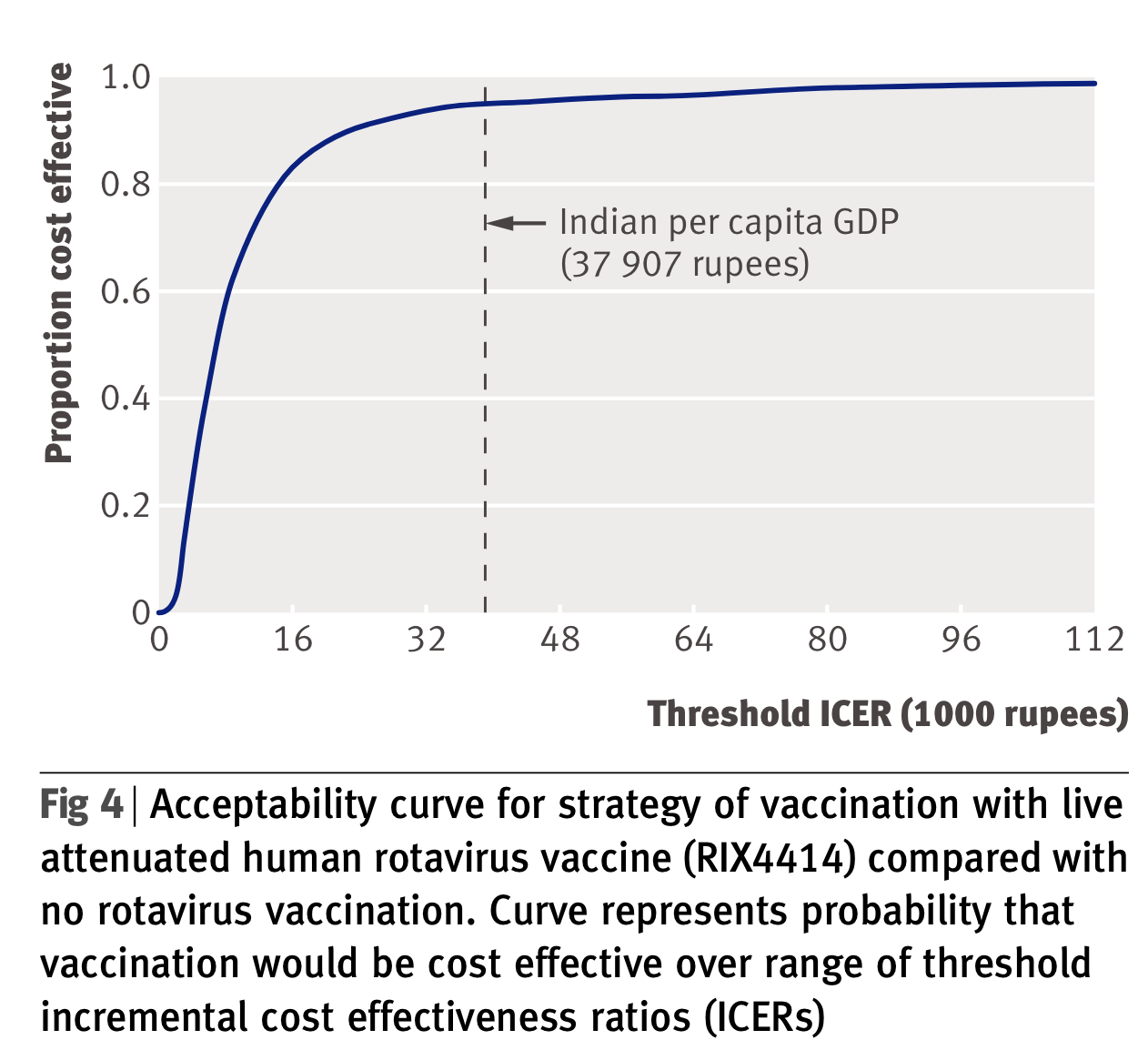Capstone Exercise
Development and Construction of a Model
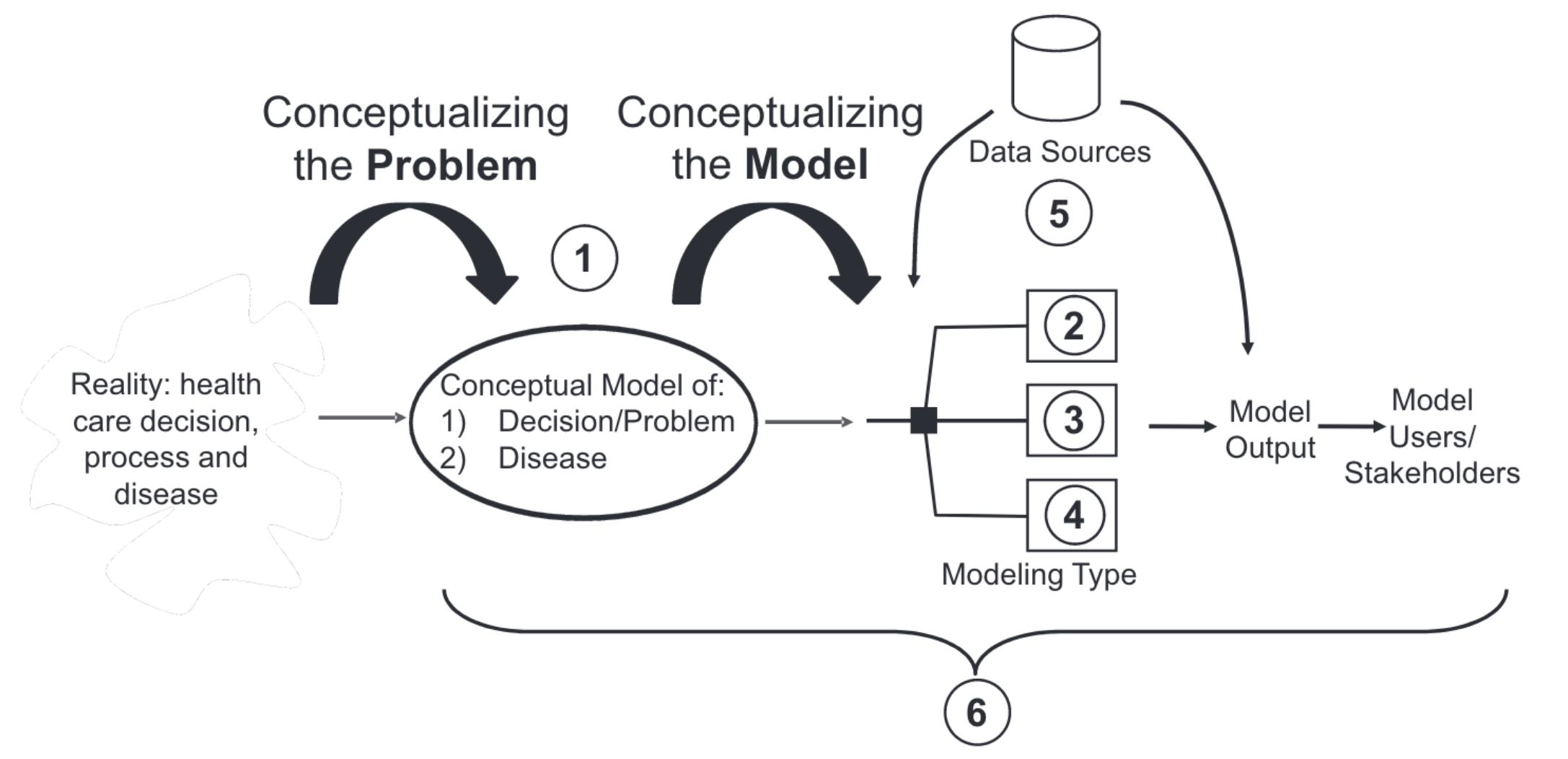
1) the conceptualization paper, which describes the conceptualization of both the problem and the model; 2), 3) and 4) which describe the three main kinds of modeling methods addressed, including state transition model, discrete event and agent based models and dynamic transmission models; 5) parameter estimation used to calibrate the models, and 6) the transparency and validation of a model. Roberts M et al., Value in Health (2012)
Capstone Exercise 1: Specify the Decision Problem
What is the motivation and underlying decision problem you are addressing?
What is the problem you are addressing?
Why is a decision model appropriate to address this problem?
What is the population? Include any important characteristics that should be identified
Example: Rotavirus vaccine in India

Example: Rotavirus vaccine in India
What is the problem? Rotavirus is a leading cause of severe gastroenteritis in India, affecting children under the age of 5. There is currently a vaccine available; however, little evidence exists on the cost-effectiveness of a mass vaccination program for all newborns in India
Why a decision model? There are clear TRADEOFFS in the approach to vaccinate versus not, for all newborns in India. Tradeoffs might include, costs, side effects, short and long-term benefits of averting rotavirus
What is the population? All newborns in India
Capstone Exercise 2: Identify treatment / policy strategies
What are the treatment / policy strategies you seek to evaluate?
List all treatment/policy strategies you seek to evaluate
What is the time horizon that captures all benefits/costs for the decision problem?
Example: Rotavirus vaccine in India
Treatment/policy strategies: Vaccinate versus not vaccinate (or standard of care)
Time horizon: This paper chose 5-years since the infection happens mostly under the age of 5 (however, one could also argue that a lifetime horizon would be appropriate to capture the full benefits/costs over the lifetime of averting rotavirus effects in children)
Combining 1 & 2
Narrowing the objective
Start –
- Reducing the burden of non-communicable disease in Bangladesh
Next –
- Reducing the burden of diabetes among individuals over the age of 65 in Bangladesh
Finally! –
- The cost-effectiveness of testing and monitoring individuals over the age of 65 for Type II Diabetes in Bangladesh
Capstone Exercise 3: Map Out a Markov Structure
What type of model is appropriate for your decision problem?
Provide rationale for choosing a model & map out the model structure
If you decide on a Markov model, this would include identifying health states (bubble diagram), cycle length, and outcomes (outcomes can include both economic [e.g. ICERs] and clinical [cases of HIV averted]).
Schematic of Markov model (in bubble diagram format)
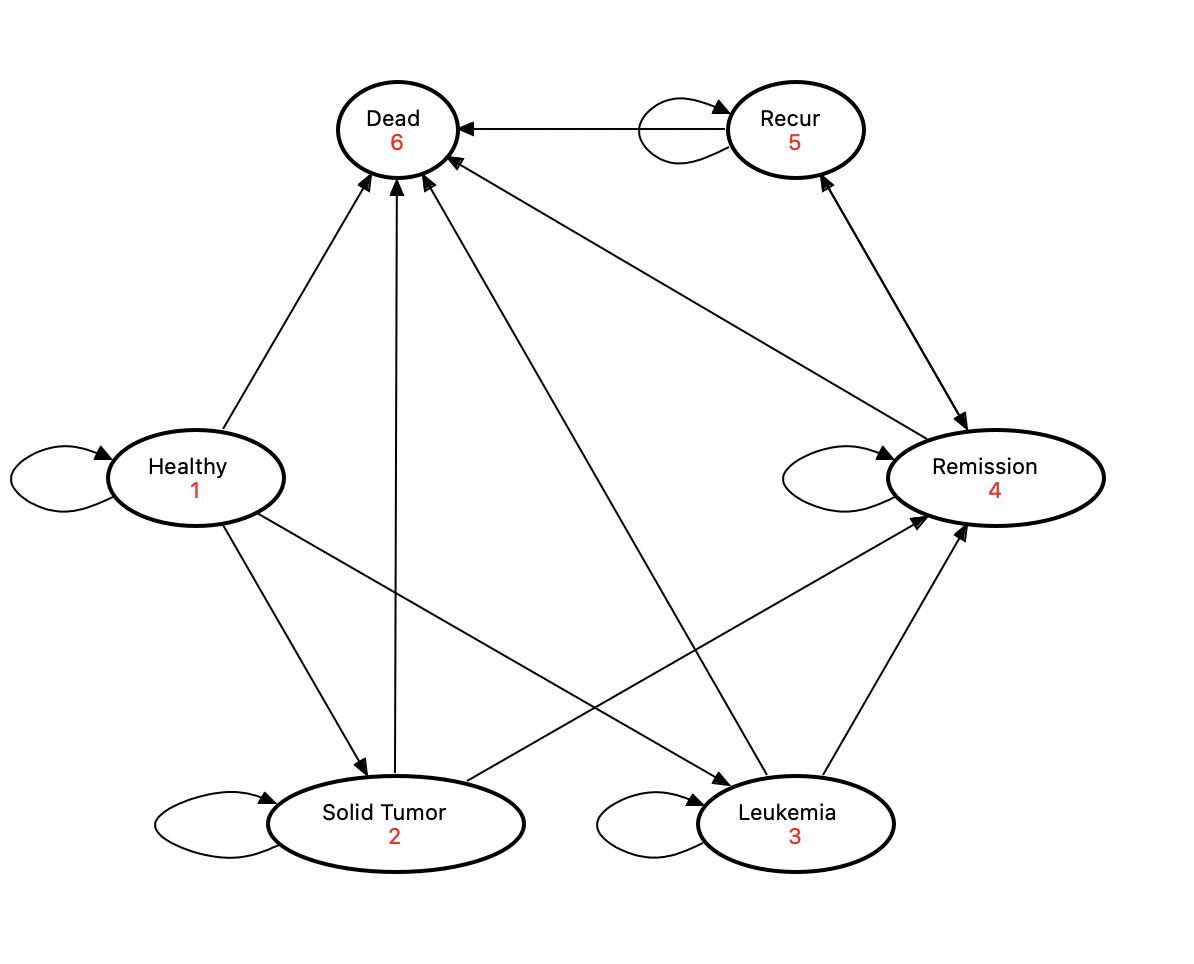
Schematic of Markov model (in tree format)
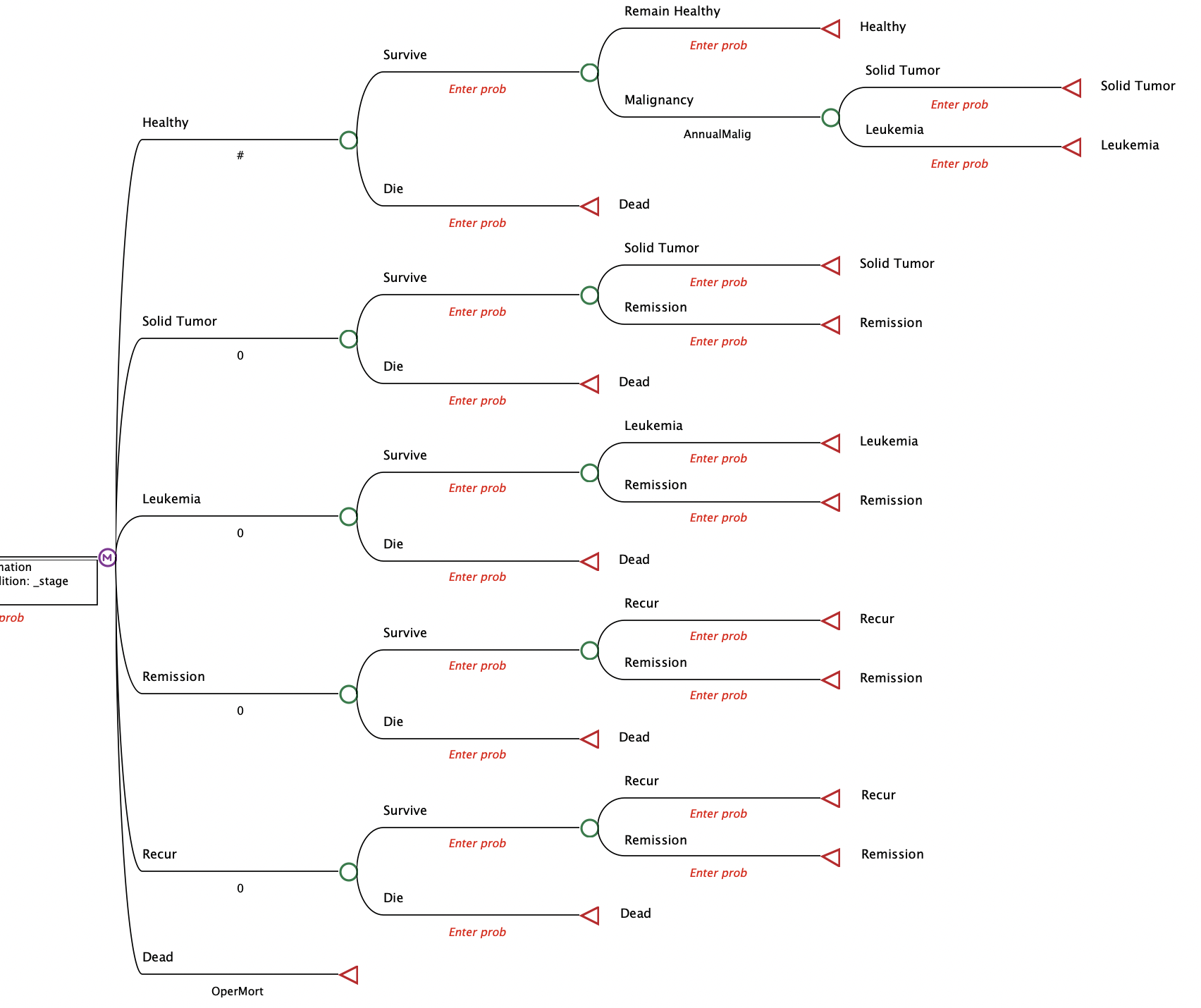
Schematic of Markov model (in tree format) (Rotavirus example)
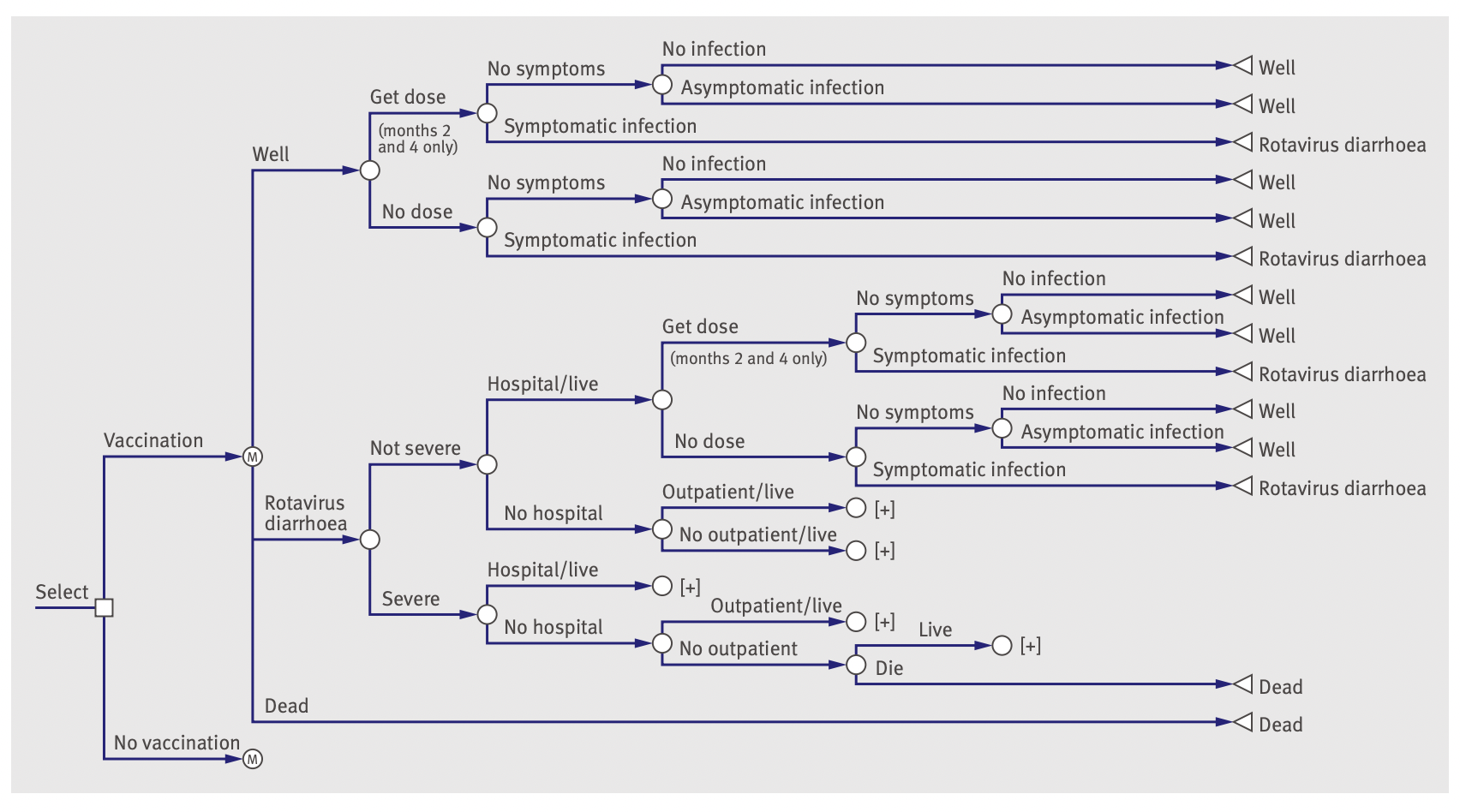
Schematic of Markov model (in tree format) (Rotavirus example)
- Rotavirus example does not include background mortality!
- Your models should include a “survive/die” background mortality probabilities Schematic of Markov model (in tree format)
Capstone Exercise 4: Parameterize the Model
Identify the main parameters needed in your model
Parameters will include transition probabilities of disease, important properties of your interventions, including test sensitivity/specificity, efficacy, etc., quality of life, and costs.
*Note: Identifying the parameters with vague estimates is enough. You do not need to spend time searching for each parameter. Including numbers to run your simulations is “good enough” for this exercise.
Disease-related parameters
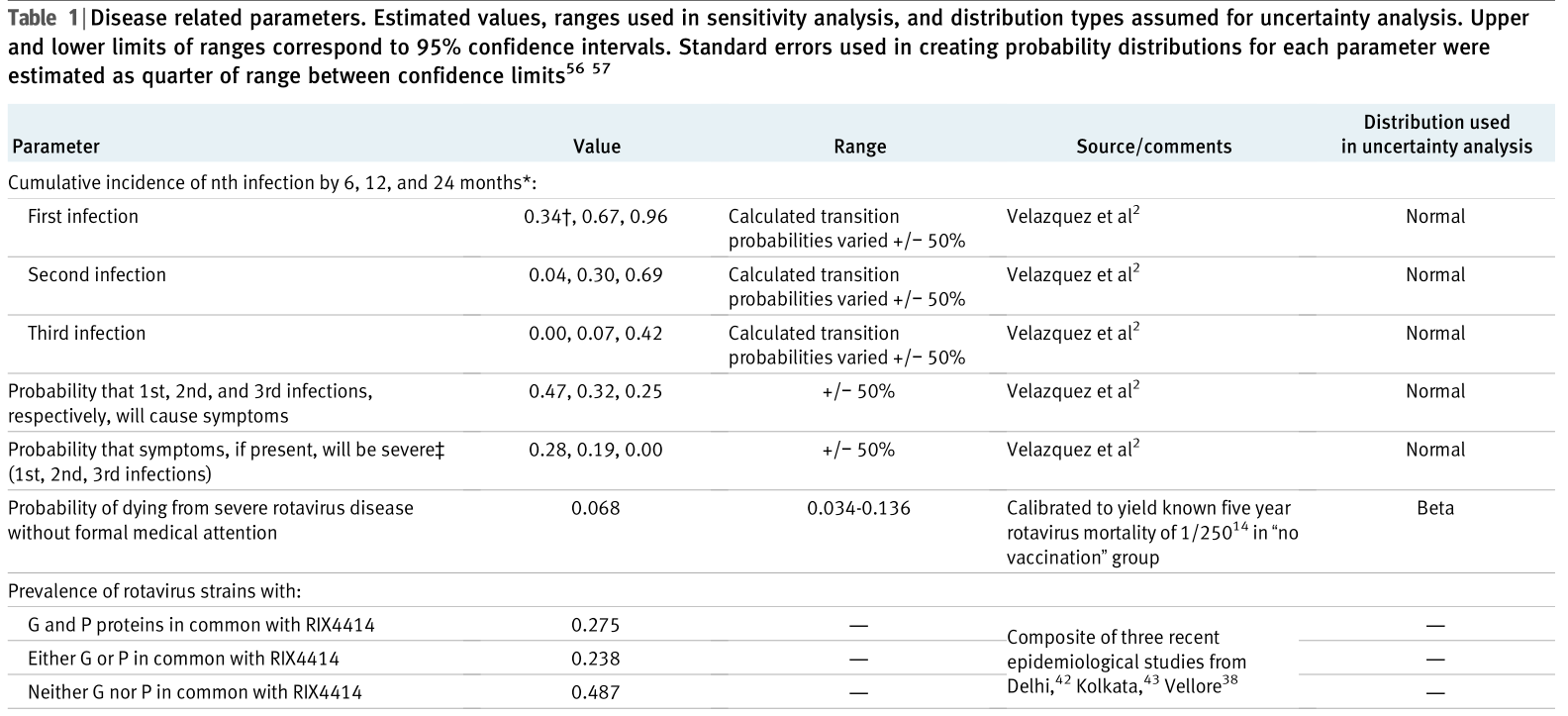
Intervention-related parameters
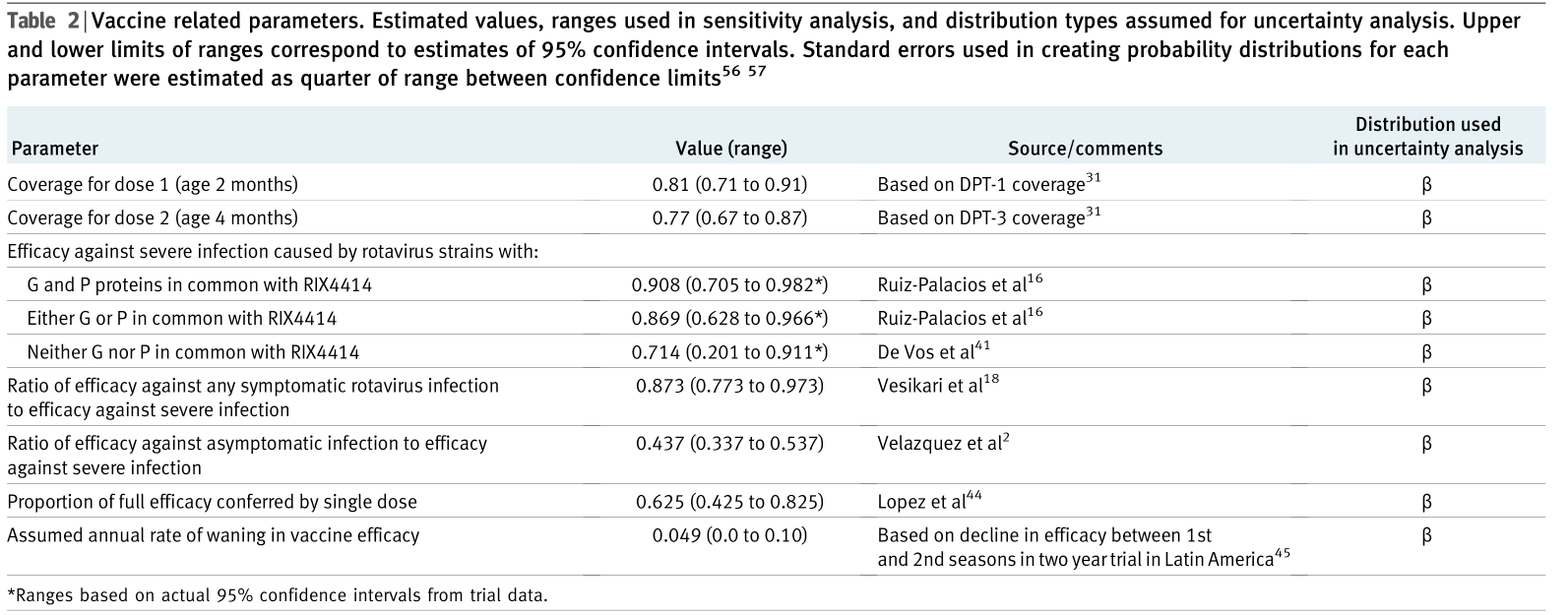
Utility or disability weights
Example of utility weights:

Utility or disability weights
Example of disability weights: Marx et al., Lancet Global Health (2020)

Costs
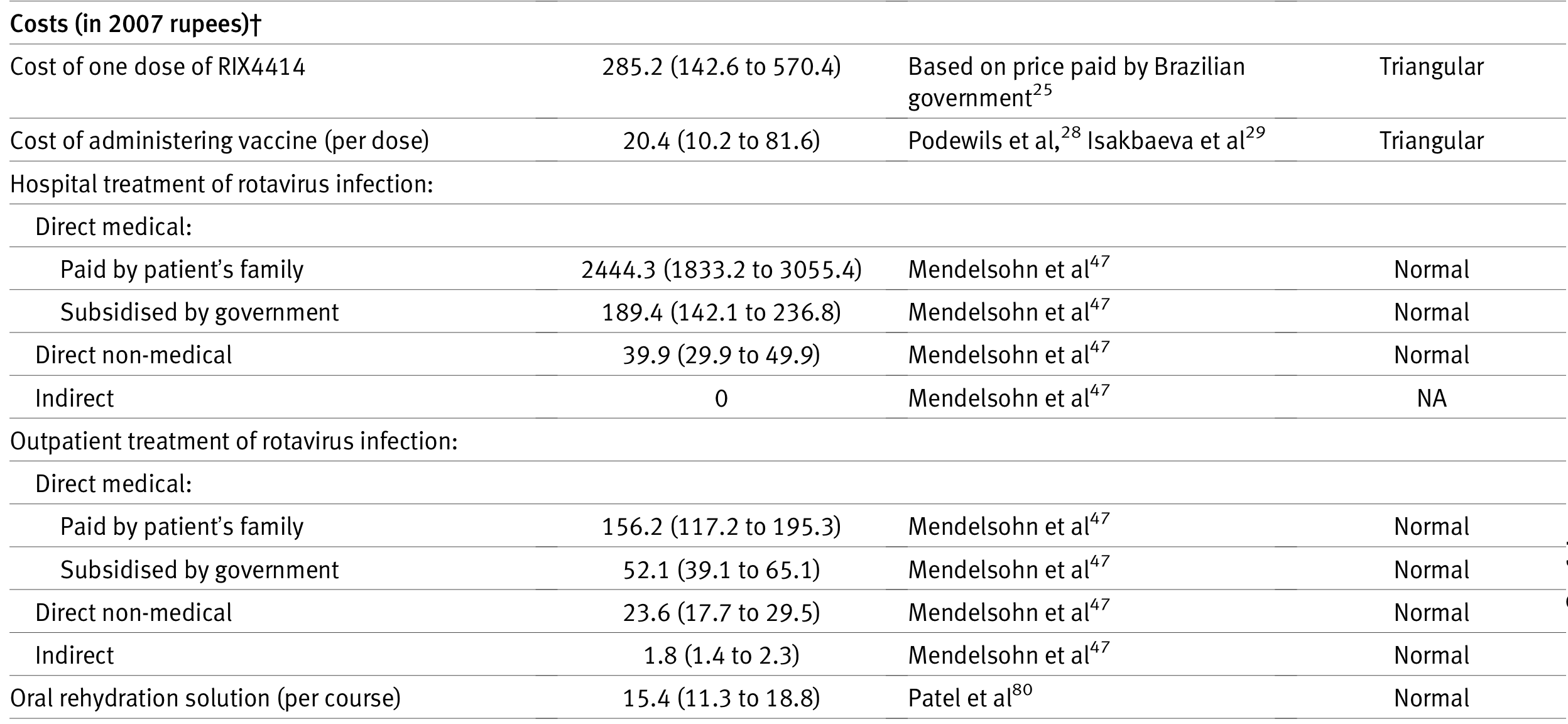
Capstone Exercise 5: Finish and run your model
Base case

One-way sensitivity analysis
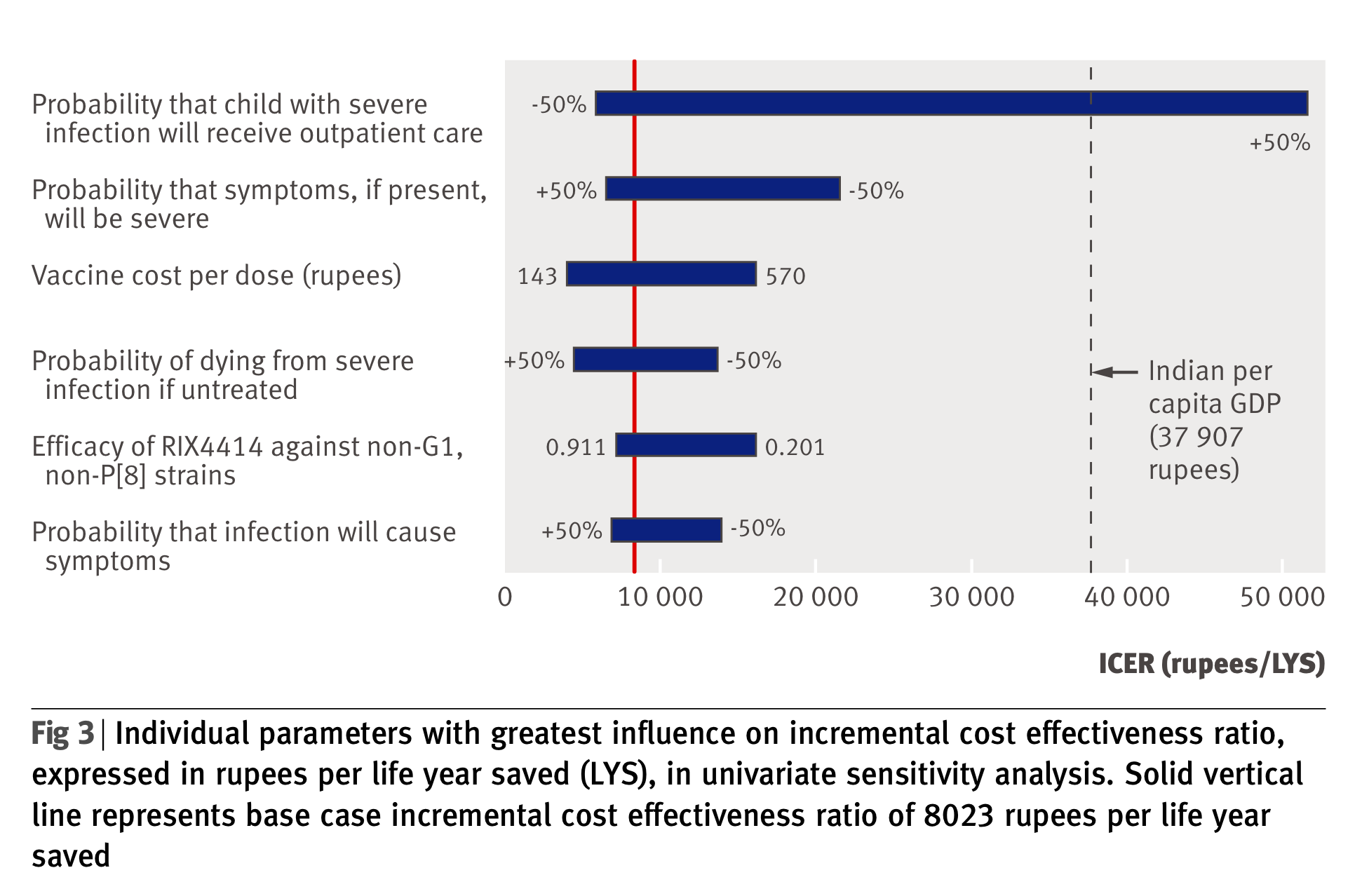
Probablistic sensitivity analysis
